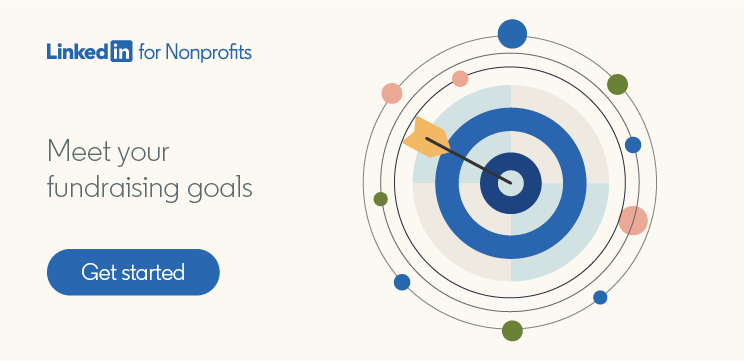
5 Tips for Crafting the Perfect Year-End Donor Thank You Email
Sending thoughtful “thank you” emails to donors is a key step in making them feel appreciated—and inspiring them to donate again. These emails are more than just a token of appreciation: they’re also an opportunity to reinforce your mission and illustrate exactly how a donor’s gift is helping your organization achieve its goals.
To help you close out the year on an uplifting note, here are five tips for crafting year-end donor “thank you” emails that are sure to leave a lasting impression!
Tip #1: Use data to build trust
Creating a sense of transparency is crucial to building trust and making donors feel part of something bigger than themselves. People like to know that their donations are being used to further your mission, so look to include concrete details and data points within your year-end messages that demonstrate where their money went. For example, the International Rescue Committee (IRC) has included charts like the one below in its emails to demonstrate that the vast majority of money raised goes directly toward programs and services that support refugees and others in need:
It’s important to strike the right balance between empirical data and warmth, so don’t overload your “thank you” message with numbers. Pepper in specific details and figures, but keep the focus squarely on showing gratitude.
Tip #2: Celebrate small donations
As the old saying goes, every little helps. In the first half of 2020, nonprofits saw a 19.2% increase in small donations compared to the first six months of 2019, so it’s especially important to thank small-dollar donors this year.
Celebrating small contributions in your year-end “thank you” message allows you to forge a stronger relationship with previous small-dollar donors—inspiring greater involvement on their part. Perhaps they’d like to set a recurring donation? Or maybe they’d be interested in supporting your organization in another way, like volunteering or donating non-monetary resources?
Highlighting the meaningful impact those $5 - $50 donations make also encourages supporters to consider what they can spare, even if it’s just the cost of a cup of coffee. A great example is this email from the St. Louis Area Foodbank, which notes that $25 can provide 100 meals for hungry families in the coming year:
Tip #3: Humanize your emails
Email blasts can sometimes feel impersonal, but there are lots of little touches you can add to make them feel warmer and more human. The simple act of addressing supporters by name can go a long way towards forging a deeper connection and cultivating an enduring relationship. Mentioning the donor’s name somewhere in the body of the email, not just at the start, is a good way to keep them engaged as they read through your message, as this email from Reprieve US demonstrates:
You might also consider writing the email in the first person, telling a personal story, and signing off with your own name (or the name of one of your leaders). This can convey the sense of speaking to the donor one-to-one and inviting them into the conversation.
Of course, one of the easiest ways to immediately humanize your “thank you” emails is by including photos. It could be pictures of your employees or volunteers, letting the donor get to know the people who carry out your mission. Or, you might share the photos and stories of some of the people you’ve helped. There are legal and ethical considerations to take into account here, but if you have the go-ahead, it can make a big difference in the way supporters engage with your emails. For inspiration, check out this email from the Children’s Hospital of Pittsburgh of UPMC, which features some of the patients the hospital has helped:
Tip 4: Mix up the medium
One way to make your year-end message memorable—and to increase engagement—is to include a video component. The video could consist of your organization’s executive director, board members, or employees delivering a message of gratitude, highlighting the year’s accomplishments, and looking ahead to the coming year. You can also use it to discuss your organization’s mission and highlight the communities and causes you serve. Take a look at this impactful video from Save the Children US in which the organization’s then-director of content discusses the difference that supporters have made in the lives of children impacted by the food crisis in Niger:
The great thing about video messages is that they can have a life beyond the year-end email blast. A video shared on your organization’s website or YouTube channel can be found by anyone, potentially inspiring donations even years after it was made. Plus, you can share your video on your social media channels, giving it added reach.
Tip 5: Keep it simple
The holiday season is overwhelming for many people, so aim to keep your year-end message simple. You don’t want to overload donors with too much information at a time when they already have a lot on their minds, especially in a year like 2020.
Depending on the message you want to convey, you might decide to treat your year-end message like a holiday card, wishing the donor a safe and happy holiday season and expressing gratitude for their involvement in your organization’s mission. Just look at this short and sweet message from Cancer Research UK, which lets donors know the organization is thinking of them and places an emphasis on community:
A positive end to a challenging year
Whatever information you decide to share in your year-end “thank you” email, the most important thing you can do is let donors know that you care. Put a smile on your supporters’ faces at the end of this difficult year, and help them look ahead to a brighter tomorrow.
If you’re looking for help boosting your fundraising efforts in 2021, you can learn more about fundraising solutions from LinkedIn for Nonprofits by contacting one of our nonprofit consultants today.






